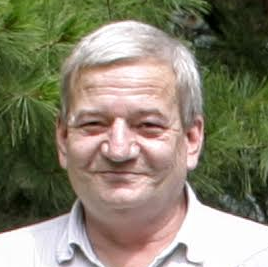1. Neurochemistry Group
We study physiology, biochemistry and pharmacology of cholinergic neurons at the molecular level and molecular pharmacology of other GPCRs. In our study, we mainly employ cell lines but we also use animal models. Our research is focused mainly on these topics:
- biochemical physiology and pharmacology of cholinergic neurons
- development and differentiation of cholinergic neurons
- synthesis, storage, and release of acetylcholine
- presynaptic regulation of acetylcholine release
- cholinergic mechanisms in the pathogenesis of Alzheimer´s disease
- influence of beta-amyloid on acetylcholine metabolism and muscarinic transmission
- molecular pharmacology of muscarinic receptors
- allosteric modulation of receptor activation.
- interaction of receptors with G-proteins
- modelling of muscarinic receptor signal transduction.
2. Group of Biochemistry of Membrane Receptors
The research focuses on the cellular and molecular mechanisms of desensitization of hormone response mediated by the activation of G protein-coupled receptors (GPCR). G protein-coupled receptors are plasma membrane integral proteins that serve as transducers of extracellular signals across the plasma membrane bilayer to the cell interior. GPCR play a key role in the regulation of many physiological processes and functions. Moreover, GPCRs represent one of the most important groups of targets for therapeutics. The main areas of the research are:
- role of the cell membrane and membrane domains
- opioid receptors and drug addiction
- effect of monovalent ions on δ-opioid receptors – analysis of lithium effect in living cells and isolated cell membranes.
Publication 2015 - 2021
Projects
Given the broad range of functions that muscarinic receptors subserve, it is of fundamental importance to find subtype-selective ligands for therapeutic use in specific disorders.
More
Ectopic agonists represent a new class of drugs that bind out of the orthosteric site and display unique functional selectivity through mechanisms yet to be defined. We perform a detailed analysis of receptor activation induced by ectopic and classical agonists with the aim to reveal molecular mechanisms underlying functional selectivity.
More
A biased agonist is a ligand which stabilizes a particular active conformation of a receptor, thus stimulating some responses but not others. Biased agonists might represent a novel and uniquely effective type of therapeutic agent with reduced side-effects.
More
The aim of the project is to determine how disruption of cholinergic activation of striatal GABAergic interneurons alters striatal signalling and striatum-based behaviour by using a mouse model with deletion of the β2 nicotinic acetylcholine receptor subunit in striatal GABAergic interneurons.
More
Cholesterol has been found to co-crystallize with a number of GPCRs. Our current experiments show that membrane cholesterol specifically binds to a muscarinic receptor and slows down their activation.
More
Addiction to opioid drugs (opioids) represents one of the most severe forms of drug abuse. Opium is one of the oldest known drugs and is used for its medicinal and euphoric effects for thousands of years. Opioid dependence develops as a consequence of changes in the central nervous system (CNS) induced by prolonged exposure to opioid drugs, e.g., morphine, codein or heroin.
More
Activity of opioid receptor (OR) is among others modulates by monovalent cations especially by sodium (Na+) and lithium (Li+) which atomic radius is very similar to those of sodium. Lithium is used in psychiatry as a mood stabilizer (see review article Vošahlíková and Svoboda, 2016). Monovalent ions modulate GPCR signalling in not fully understood mechanism.
More
Cell (plasma) membrane (PM) serves as a protective barrier, but also plays a role in the cellular communication. The integrity of hydrophobic lipid environment of PM is an important factor affecting function of membrane proteins.
More
Achievements
 Jakubík, J.; Randáková, A. Insights into the Operational Model of Agonism of Receptor Dimers. Expert Opin. Drug Discov. 2022, 17, 1181–1191, doi:10.1080/17460441.2023.2147502. Invited Review.
The exact ranking of efficacies and potencies of agonists is indispensable in the discovery of new selective agonists.
The operational model of agonism (OMA) is the current standard.
Many receptors function as oligomers, requiring an extension of the classical OMA.
Extension of OMA by slope factors gives simple equations of functional response that are easy to fit experimental data but results may be inaccurate.
Extension of OMA by cooperativity factors gives accurate but complex equations of functional response.
Extension of OMA by cooperativity factors should be preferred.
More
Jakubík, J.; Randáková, A. Insights into the Operational Model of Agonism of Receptor Dimers. Expert Opin. Drug Discov. 2022, 17, 1181–1191, doi:10.1080/17460441.2023.2147502. Invited Review.
The exact ranking of efficacies and potencies of agonists is indispensable in the discovery of new selective agonists.
The operational model of agonism (OMA) is the current standard.
Many receptors function as oligomers, requiring an extension of the classical OMA.
Extension of OMA by slope factors gives simple equations of functional response that are easy to fit experimental data but results may be inaccurate.
Extension of OMA by cooperativity factors gives accurate but complex equations of functional response.
Extension of OMA by cooperativity factors should be preferred.
More
 Randáková, A.; Jakubík, J. Functionally Selective and Biased Agonists of Muscarinic Receptors. Pharmacol. Res. 2021, 169, 105641, doi:10.1016/j.phrs.2021.105641.
Invited review.
More
Randáková, A.; Jakubík, J. Functionally Selective and Biased Agonists of Muscarinic Receptors. Pharmacol. Res. 2021, 169, 105641, doi:10.1016/j.phrs.2021.105641.
Invited review.
More
 Abbondanza, A.; Ribeiro Bas, I.; Modrak, M.; Capek, M.; Minich, J.; Tyshkevich, A.; Naser, S.; Rangotis, R.; Houdek, P.; Sumova, A.; et al. Nicotinic Acetylcholine Receptors Expressed by Striatal Interneurons Inhibit Striatal Activity and Control Striatal-Dependent Behaviors. J. Neurosci. 2022, 42, 2786–2803, doi:10.1523/JNEUROSCI.1627-21.2022.
A large variety of nicotinic acetylcholine receptors (nAChRs) are expressed in the striatum, a brain region that is crucial in the control of behaviour. The complexity of receptors with different functions is hindering our understanding of mechanisms through which striatal acetylcholine modulates behaviour. We focused on the role of a small population of beta2-containing nAChRs. We identified neuronal types expressing these receptors and determined their impact on the control of explorative behaviour, anxiety-like behaviour, learning, and sensitivity to stimulants. Additional experiments showed that these alterations were associated with an overall increased activity of striatal neurons. Thus, the small population of nicotinic receptors represents an interesting target for modulation of response to stimulant drugs and other striatal-based behaviour.
More
Abbondanza, A.; Ribeiro Bas, I.; Modrak, M.; Capek, M.; Minich, J.; Tyshkevich, A.; Naser, S.; Rangotis, R.; Houdek, P.; Sumova, A.; et al. Nicotinic Acetylcholine Receptors Expressed by Striatal Interneurons Inhibit Striatal Activity and Control Striatal-Dependent Behaviors. J. Neurosci. 2022, 42, 2786–2803, doi:10.1523/JNEUROSCI.1627-21.2022.
A large variety of nicotinic acetylcholine receptors (nAChRs) are expressed in the striatum, a brain region that is crucial in the control of behaviour. The complexity of receptors with different functions is hindering our understanding of mechanisms through which striatal acetylcholine modulates behaviour. We focused on the role of a small population of beta2-containing nAChRs. We identified neuronal types expressing these receptors and determined their impact on the control of explorative behaviour, anxiety-like behaviour, learning, and sensitivity to stimulants. Additional experiments showed that these alterations were associated with an overall increased activity of striatal neurons. Thus, the small population of nicotinic receptors represents an interesting target for modulation of response to stimulant drugs and other striatal-based behaviour.
More
 Dolejší, E.; Szánti-Pintér, E.; Chetverikov, N.; Nelic, D.; Randáková, A.; Doležal, V.; Kudová, E.; Jakubík, J. Neurosteroids and Steroid Hormones Are Allosteric Modulators of Muscarinic Receptors. Neuropharmacology 2021, 199, 108798, doi:10.1016/j.neuropharm.2021.108798.
Some neurosteroids and steroid hormones bind to muscarinic acetylcholine receptors with the affinity of 100 nM or greater
Steroids acting at nanomolar concentrations represent the novel pharmacophore of allosteric modulators of muscarinic receptors
Corticosterone and progesterone allosterically modulate muscarinic receptors at physiologically relevant concentrations
More
Proper determination of agonist efficacy is indispensable in the evaluation of agonist selectivity and bias to activation of specific signalling pathways. The operational model of pharmacological agonism is a useful means for achieving this goal.
More
We have developed new muscarinic receptor agonists as a pharmacophore for the development of new non-addictive analgesics such as opiates or weakening of immunity as steroid analgesics. These muscarinic analgesics would not cause side effects such as incontinence, excessive salivation and sweating, and others.
More
Structurally diverse agonists for a given receptor induce receptor conformations specific to each structural family. These agonist-specific conformations can lead to non-uniform modulation of signalling pathways. This preferential orientation of signalling of a given receptor towards a subset of its signal transducers is termed signalling bias. This property may be employed to develop drugs that selectively produce desired effects while avoiding side effects associated with activation of unwanted signalling pathways. We modelled conformations of the M2 receptor specific to individual agonists, including the newly developed Gi-biased agonists.
More
Proper determination of agonist efficacy is essential in the assessment of agonist selectivity and signalling bias. Agonist efficacy is a relative term that is dependent on the system in which it is measured, especially being dependent on receptor expression level. In this work, we analyse limits and pitfalls of fitting OM to experimental data.
More
Our new publication in journal Neuropharmacology in which we demonstrate that membrane cholesterol plays an important and subtype-specific role in activation of muscarinic acetylcholine receptors. To our knowledge, this is the first demonstration of pharmacological selectivity due to differences in receptor-membrane interactions at any GPCR. The possibility to achieve pharmacological selectivity based on receptor-membrane interactions changes our view on the molecular basis of pharmacological selectivity and opens new ways for the development of a novel pharmaceutics.
More
In this study, we have developed new potent and long-acting antagonists of muscarinic acetylcholine receptors with a potential therapeutic use.
More
In collaboration with Barry University novel muscarinic antagonists were developed.
More
This article analyzes in atomistic detail binding of orthosteric ligands to the muscarinic receptors.
More
Dr. Jan Jakubik Institute of Physiology Academy of Sciences and professor. Jaromir Mysliveček Institute of Physiology 1st Faculty of Medicine were approached to write the current list of methods that are used in research of muscarinic receptor as part of a Neuromethods series published by Springer.
More
Procedure described in this paper represents a possible way to predict interactions of antagonists with aminergic GPCRs.
More
Even short-term feeding of transgenic mice with chow containing specific lipid-based dietary supplements can influence markers of cholinergic synapses and rectify impaired muscarinic signal transduction that develops in transgenic mice.
More
Show more
Dolejší, E.; Szánti-Pintér, E.; Chetverikov, N.; Nelic, D.; Randáková, A.; Doležal, V.; Kudová, E.; Jakubík, J. Neurosteroids and Steroid Hormones Are Allosteric Modulators of Muscarinic Receptors. Neuropharmacology 2021, 199, 108798, doi:10.1016/j.neuropharm.2021.108798.
Some neurosteroids and steroid hormones bind to muscarinic acetylcholine receptors with the affinity of 100 nM or greater
Steroids acting at nanomolar concentrations represent the novel pharmacophore of allosteric modulators of muscarinic receptors
Corticosterone and progesterone allosterically modulate muscarinic receptors at physiologically relevant concentrations
More
Proper determination of agonist efficacy is indispensable in the evaluation of agonist selectivity and bias to activation of specific signalling pathways. The operational model of pharmacological agonism is a useful means for achieving this goal.
More
We have developed new muscarinic receptor agonists as a pharmacophore for the development of new non-addictive analgesics such as opiates or weakening of immunity as steroid analgesics. These muscarinic analgesics would not cause side effects such as incontinence, excessive salivation and sweating, and others.
More
Structurally diverse agonists for a given receptor induce receptor conformations specific to each structural family. These agonist-specific conformations can lead to non-uniform modulation of signalling pathways. This preferential orientation of signalling of a given receptor towards a subset of its signal transducers is termed signalling bias. This property may be employed to develop drugs that selectively produce desired effects while avoiding side effects associated with activation of unwanted signalling pathways. We modelled conformations of the M2 receptor specific to individual agonists, including the newly developed Gi-biased agonists.
More
Proper determination of agonist efficacy is essential in the assessment of agonist selectivity and signalling bias. Agonist efficacy is a relative term that is dependent on the system in which it is measured, especially being dependent on receptor expression level. In this work, we analyse limits and pitfalls of fitting OM to experimental data.
More
Our new publication in journal Neuropharmacology in which we demonstrate that membrane cholesterol plays an important and subtype-specific role in activation of muscarinic acetylcholine receptors. To our knowledge, this is the first demonstration of pharmacological selectivity due to differences in receptor-membrane interactions at any GPCR. The possibility to achieve pharmacological selectivity based on receptor-membrane interactions changes our view on the molecular basis of pharmacological selectivity and opens new ways for the development of a novel pharmaceutics.
More
In this study, we have developed new potent and long-acting antagonists of muscarinic acetylcholine receptors with a potential therapeutic use.
More
In collaboration with Barry University novel muscarinic antagonists were developed.
More
This article analyzes in atomistic detail binding of orthosteric ligands to the muscarinic receptors.
More
Dr. Jan Jakubik Institute of Physiology Academy of Sciences and professor. Jaromir Mysliveček Institute of Physiology 1st Faculty of Medicine were approached to write the current list of methods that are used in research of muscarinic receptor as part of a Neuromethods series published by Springer.
More
Procedure described in this paper represents a possible way to predict interactions of antagonists with aminergic GPCRs.
More
Even short-term feeding of transgenic mice with chow containing specific lipid-based dietary supplements can influence markers of cholinergic synapses and rectify impaired muscarinic signal transduction that develops in transgenic mice.
More
Show more
Publications
Ujčíková; Hana - Lee; Y. S. - Roubalová; Lenka - Svoboda; Petr
.
The impact of multifunctional enkephalin analogs and morphine on the protein changes in crude membrane fractions isolated from the rat brain cortex and hippocampus
.
Peptides. 2024; 174(April); 171165
.
IF = 3.0
[ASEP]
[
doi
]
Urushadze; Anna - Janíček; M. - Abbondanza; Alice - Janíčková; Helena
.
Timed Sequence Task: A New Paradigm to Study Motor Learning and Flexibility in Mice
.
ENEURO. 2023; 10(10); 1-13
.
IF = 3.4
[ASEP]
[
doi
]
Ujčíková; Hana - Hejnová; L. - Novotný; J. - Svoboda; Petr
.
Protracted morphine withdrawal induces upregulation of peroxiredoxin II and reduces 14-3-3 protein levels in the rat brain cortex and hippocampus
.
Brain Research. 2023; 1813(Aug 15); 148428
.
IF = 2.9
[ASEP]
[
doi
]
Szczurowska; Ewa - Szánti-Pintér; Eszter - Chetverikov; Nikolai - Randáková; Alena - Kudová; Eva - Jakubík; Jan
.
Modulation of Muscarinic Signalling in the Central Nervous System by Steroid Hormones and Neurosteroids
.
International Journal of Molecular Sciences. 2023; 24(1)); 507
.
IF = 5.6
[ASEP]
[
doi
]
Randáková; Alena - Nelic; Dominik - Jakubík; Jan
.
A critical re-evaluation of the slope factor of the operational model of agonism: When to exponentiate operational efficacy
.
Scientific Reports. 2023; 13(1); 17587
.
IF = 4.6
[ASEP]
[
doi
]
Ujčíková; Hana - Roubalová; Lenka - Lee; Y. S. - Slaninová; Jiřina - Brejchová; Jana - Svoboda; Petr
.
The Dose-Dependent Effects of Multifunctional Enkephalin Analogs on the Protein Composition of Rat Spleen Lymphocytes; Cortex; and Hippocampus; Comparison with Changes Induced by Morphine
.
Biomedicines. 2022; 10(8)); 1969
.
IF = 4.7
[ASEP]
[
doi
]
Ujčíková; Hana - Robles; D. - Yue; X. - Svoboda; Petr - Lee; Y. S. - Navratilova; E.
Time-Dependent Changes in Protein Composition of Medial Prefrontal Cortex in Rats with Neuropathic Pain
.
International Journal of Molecular Sciences. 2022; 23(2)); 955
.
IF = 5.6
[ASEP]
[
doi
]
Ujčíková; Hana - Eckhardt; Adam - Hejnová; L. - Novotný; J. - Svoboda; Petr
.
Alterations in the Proteome and Phosphoproteome Profiles of Rat Hippocampus after Six Months of Morphine Withdrawal: Comparison with the Forebrain Cortex
.
Biomedicines. 2022; 10(1)); 80
.
IF = 4.7
[ASEP]
[
doi
]
Szczurowska; Ewa - Szánti-Pintér; Eszter - Randáková; Alena - Jakubík; Jan - Kudová; Eva
.
Allosteric Modulation of Muscarinic Receptors by Cholesterol; Neurosteroids and Neuroactive Steroids
.
International Journal of Molecular Sciences. 2022; 23(21)); 13075
.
IF = 5.6
[ASEP]
[
doi
]
Jůza; R. - Vojtěchová; I. - Štefková-Mazochová; K. - Dehaen; W. - Petrásek; T. - Prchal; L. - Kobrlová; T. - Janoušek; J. - Vlček; P. - Mezeiová; E. - Svozil; D. - Zdarová Karasová; J. - Pejchal; J. - Stark; H. - Satala; G. - Bojarski; A. J. - Kubacka; M. - Mogilski; S. - Randáková; Alena - Musílek; K. - Soukup; O. - Korábečný; J.
Novel D-2/5-HT receptor modulators related to cariprazine with potential implication to schizophrenia treatment
.
European Journal of Medicinal Chemistry. 2022; 232(Mar 15)); 114193
.
IF = 6.7
[ASEP]
[
doi
]
Jakubík; Jan - Randáková; Alena
.
Insights into the operational model of agonism of receptor dimers
.
Expert Opinion on Drug Discovery. 2022; 17(11); 1181-1191
.
IF = 6.3
[ASEP]
[
doi
]
Abbondanza; Alice - Bas; Irina Ribeiro - Modrák; Martin - Čapek; Martin - Minich; Jessica - Tyshkevich; Alexandra - Naser; Shahed - Rangotis; Revan - Houdek; Pavel - Sumová; Alena - Dumas; S. - Bernard; V. - Janíčková; Helena
.
Nicotinic Acetylcholine Receptors Expressed by Striatal Interneurons Inhibit Striatal Activity and Control Striatal-Dependent Behaviors
.
Journal of Neuroscience. 2022; 42(13); 2786-2803
.
IF = 5.3
[ASEP]
[
doi
]
Vošahlíková; Miroslava - Roubalová; Lenka - Brejchová; Jana - Alda; M. - Svoboda; Petr
.
Therapeutic lithium alters polar head-group region of lipid bilayer and prevents lipid peroxidation in forebrain cortex of sleep-deprived rats
.
Biochimica Et Biophysica Acta-Molecular and Cell Biology of Lipids. 2021; 1866(9)); 158962
.
IF = 5.288
[ASEP]
[
doi
]
Ujčíková; Hana - Hejnová; L. - Eckhardt; Adam - Roubalová; Lenka - Novotný; J. - Svoboda; Petr
.
Impact of three-month morphine withdrawal on rat brain cortex; hippocampus; striatum and cerebellum: proteomic and phosphoproteomic studies
.
Neurochemistry International. 2021; 144(Mar)); 104975
.
IF = 4.297
[ASEP]
[
doi
]
Staszewski; M. - Nelic; Dominik - Jończyk; J. - Dubiel; M. - Frank; A. - Stark; H. - Bajda; M. - Jakubík; Jan - Walczyński; K.
Guanidine Derivatives: How Simple Structural Modification of Histamine H3R Antagonists Has Led to the Discovery of Potent Muscarinic M2R/M4R Antagonists
.
ACS Chemical Neuroscience. 2021; 12(13); 2503-2519
.
IF = 5.780
[ASEP]
[
doi
]
Show more












